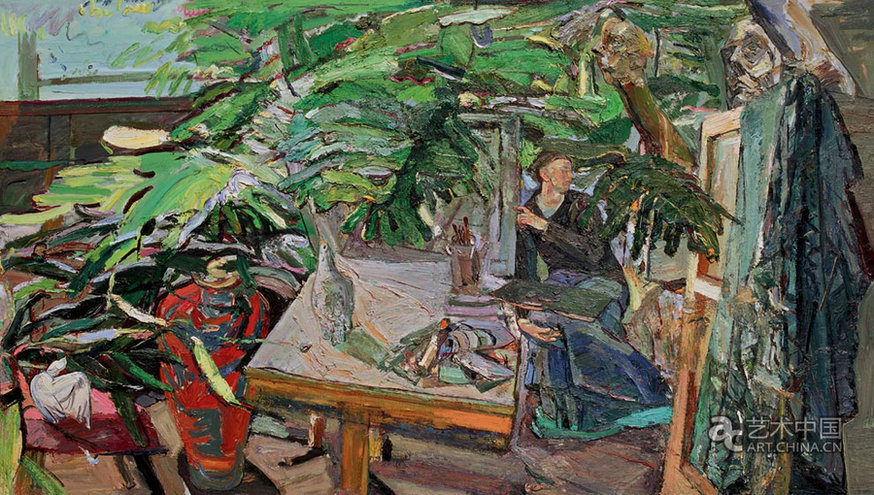 |
| Painting by Yan Ping [Photo/art.china.cn] |
There are far fewer contemporary Chinese female artists than male artists, especially painters. That is a simple fact substantiated for the most part in the marketplace but also, statistically, by the number of female artists whose work is exhibited in museums. Yan Ping is an exception. She is a woman who has had a successful career as a working artist and as a teacher. I first became aware of her large, expressionist paintings in the major art auctions throughout China in the late 1990s although her work had been exhibited in museums since 1993, and she had won numerous awards in public exhibitions.
The first time we met was in 2005 at her studio on the campus of Renmin University of China, Beijing, where she was a professor at the Xu Beihong Art Institute. At that first meeting, I remember thinking that Ping was such a small woman and her canvases were huge, full of energy and power, so how did she accomplish these works? I discovered that she is full of energy that manifests in the power one feels in her paintings. She was animated, moving constantly, shuffling around canvases twice her size.
The painting she was working on at that time, Nobody Else but Us, showed a single figure from behind, caught in a dance step. I was not surprised when Ping told me it was a self-portrait and that it stemmed from her interest in small theatrical troupes. In fact, this is the title of a series of paintings on the subject that she began in earnest in 2000 and continues to explore today.
I have kept up with Ping’s prolific output, staggering by any standard, over the past five years. I wanted to find out where she believes she fits in at this time in the developing history of contemporary Chinese art, so I arranged to visit her in late 2009 at her home studio in east Beijing.
Quite spacious by comparison to her university studio, it comprises two apartments that have been joined and essentially configured into two separate, long rooms. One serves as Ping’s studio and the other is the studio of her husband, the painter Wang Keju. At one end of Ping’s room are south-facing windows that let in a flood of light. She has a large canvas on an easel positioned near the windows. This painting in progress shows three actors in a makeshift dressing room, preparing for a performance. At the opposite end of the studio is a wall of built-in bookshelves, mostly with volumes on international art. Leaning against it is yet another painting of actors backstage.
Between both ends of the room I count at least a dozen canvases, all with figures from theatrical troupes, so I decide this is a good topic to begin our discussion. I ask why she has chosen this subject. “A lot of Chinese painters today work in a realist style because they believe it is more objective in dealing with current events and that seems to be popular. I work in an expressionist style and thematically, I deal with that which is eternal. Chinese opera is eternal, it has emotion, happiness and sadness, the things in life that are eternal. It is energetic like my style of painting. I also like to explore the eternal relationship between men and women and that can be found in the characters in the theatrical troupes I study.”
I ask if she is concerned at all about trends in contemporary Chinese art that address the socio-political changes taking place in her country. “It seems to me that male artists deal more with such topics. Current social themes mostly address struggle, but I think this has always been true throughout art history. There has to be contrast and I think most female painters have represented that.”
I ask her about the one painting in the studio that is different from all the others, Spring in the Bosom. “That is literally about the awakening of spring, about new colors bursting through the dullness of trees in winter colors, about optimism and new life. It is my statement about today, about what is possible. It represents where I have arrived.”
We recommend:
